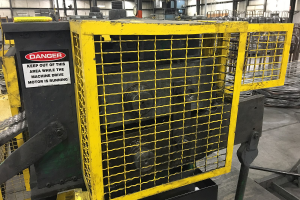New OSHA program focuses on records of low-incidence employers in high-rate industries
OSHA is stepping up its on-site inspection of injury and illness records as part of a new National Emphasis Program focusing on employers with low incidence rates who operate in high-rate industries. The program also will include a sample of construction firms.
The program, called NEP for short, starts in August was developed in response to Congressional hearings last year on a perceived problem of underreporting. The initiative is in line with OSHA’s movement towards a more enforcement-oriented approach.
Inspections under the initial stage of the program will take place over 12 months with an expectation that the program will be expanded after data from those initial inspections are analyzed. While the program is limited to states under federal OSHA’s jurisdiction, state plan OSHA programs are encouraged to conduct their own recordkeeping enforcement initiatives.
Included in the inspections will be a review of medical files for both occupational and non-occupational cases for 2007 and 2008, including 301 forms, Workers’ Compensation forms, absentee reports, and audiograms, for a selected sample of employees. Interviews will also be conducted with managers and employees to determine whether there is an injury-reporting system in place and whether incentive programs discourage employees from reporting new cases. Recordkeepers will be questioned to determine their level of training and knowledge of the recordkeeping regulations. Healthcare providers will be asked whether the employer has tried to influence the treatments provided and the recordability of cases. A limited walk-around inspection of the employer’s facility also will be conducted to determine if the hazards in the facility are consistent with the injuries and illnesses on the 300 log. Citations may be issued for any observed violations.
Employers should get ready for these inspections by:
- Reviewing 2007 and 2008 cases to gauge the accuracy of their OSHA 300 logs and make
sure there is an OSHA 301 or its equivalent for every recordable case. - Ensuring that appropriate training has been provided to recordkeepers.
- Reviewing the effectiveness of both the reporting system for illnesses and injuries and the process for routing medical information from internal and external healthcare providers to the recordkeeper.
- Evaluating whether the safety incentive program, if there is one, improperly discourages the reporting of work-related injuries or illnesses.
If you have questions or concerns about this program or how to get ready for it, please

2 Comments
This is interesting news. To follow-up, I went to the OSHA website and was unable to find anything there about this new NEP. Did I miss it somehow? If so, where should I look?
Thank you Jim for this information. If I reference you and your company may I copy and paste your blog and send it to my clients?
Thank you,
Barbara